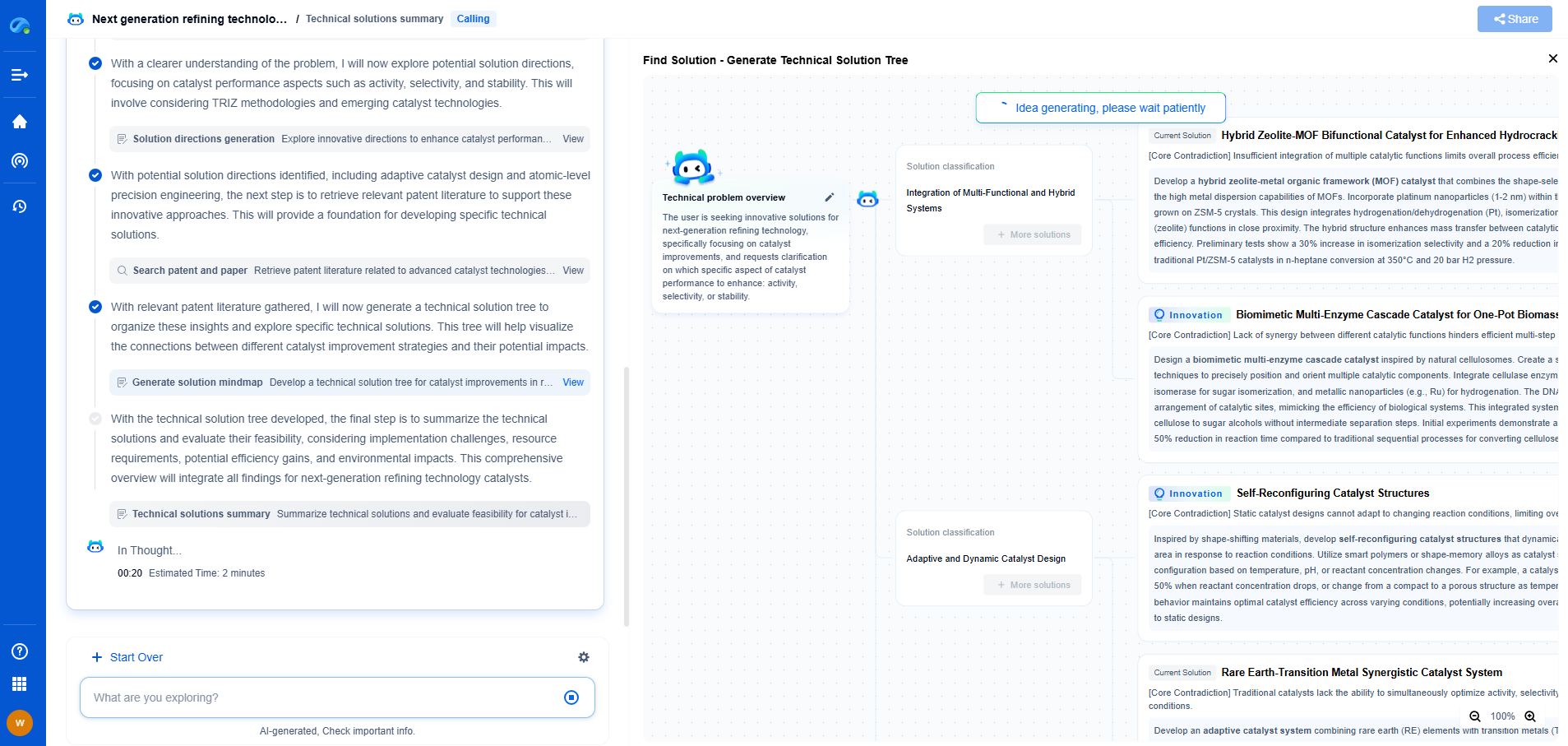Latency in Optical Networks: How It Impacts Real-Time Applications
JUN 27, 2025 |
Latency is a critical factor in optical networks, especially as we increasingly rely on real-time applications that demand quick and efficient data transmission. At its core, latency refers to the time delay experienced in a system—in this context, the delay from the moment data is sent to when it is received. In optical networks, latency can be influenced by several factors, including the speed of light in fiber, network architecture, and the processing delays at various nodes.
Factors Contributing to Latency
1. Propagation Delay: The most fundamental contributor to latency in optical networks is the propagation delay, which is the time it takes for a light signal to travel through the optical fiber. While light travels at a high speed, it is not instantaneous, and the physical distance between the source and destination can contribute significantly to latency.
2. Processing Delay: As data traverses network nodes, it encounters processing delays. Routers and switches analyze data packets to determine their paths, and this can introduce delays. In optical networks, the conversion from optical signals to electrical signals for processing and then back to optical can further add to this delay.
3. Queuing Delay: Network congestion can cause data packets to be queued at intermediate nodes. Queuing delays arise when multiple data streams compete for the same resources, leading to increased latency. Effective network management and capacity planning are essential to minimize these delays.
4. Transmission Delay: This occurs when there are limitations in bandwidth capacity, causing delays in the transmission of packets. While optical networks typically offer high bandwidth, transmission delays can still occur under peak load conditions or due to suboptimal network design.
Impact on Real-Time Applications
1. Video Conferencing: Latency can severely impact video conferencing quality, leading to issues like delays in audio and video synchronization, which can make conversations awkward and hamper communication. Users might experience lag, making it difficult to maintain a natural flow of dialogue.
2. Online Gaming: For gamers, even a slight increase in latency can be disastrous. High latency can lead to lag, which can affect the gaming experience by causing delayed responses to player inputs, which is especially critical in fast-paced competitive games.
3. Financial Trading: In high-frequency trading, milliseconds can make the difference between significant profit and loss. Financial institutions rely on low-latency networks to execute trades swiftly. Even minor delays can have substantial financial implications.
4. Telemedicine: In healthcare, telemedicine applications require seamless real-time communication for video consultations, remote monitoring, and even robotic surgeries. Latency can affect the quality of diagnosis and treatment, making it crucial for healthcare providers to have low-latency connections.
Strategies to Mitigate Latency
1. Network Optimization: Network providers can optimize routing and switching protocols to reduce processing and queuing delays. Implementing advanced algorithms and technologies can enhance data flow efficiency.
2. Infrastructure Enhancement: Investing in better infrastructure, such as higher quality optical fiber and advanced transmission technologies, can minimize propagation and transmission delays. This includes upgrading existing networks with technologies like Dense Wavelength Division Multiplexing (DWDM) to increase bandwidth and reduce transmission delays.
3. Edge Computing: By processing data closer to the source, edge computing can significantly reduce latency. For real-time applications, distributing computing resources closer to end-users minimizes the distance data must travel, thus reducing propagation delays.
4. Content Delivery Networks (CDNs): For applications involving content delivery, using CDNs can help in caching content closer to users, significantly cutting down on latency by reducing the distance data needs to travel.
Conclusion
As the demand for real-time applications continues to rise, understanding and addressing latency in optical networks becomes increasingly important. While optical networks are inherently faster than many other types of data networks, they are not immune to delays. By recognizing the factors contributing to latency and employing strategies to mitigate it, network operators can enhance the performance of real-time applications, ensuring a seamless and efficient user experience. As technology evolves, continued research and development in reducing latency will be crucial to meeting future communication needs.
Unlock Next-Gen Innovation in Communication Technology with Patsnap Eureka
The field of communication technology is evolving at breakneck speed—from 5G and satellite systems to next-gen wireless protocols and quantum communications. Staying ahead demands more than just information—it requires strategic insights, real-time patent intelligence, and a deep understanding of technological trajectories.
Patsnap Eureka, our intelligent AI assistant built for R&D professionals in high-tech sectors, empowers you with real-time expert-level analysis, technology roadmap exploration, and strategic mapping of core patents—all within a seamless, user-friendly interface. Whether you're optimizing signal processing designs, navigating 3GPP standards, or exploring IP strategies for IoT and 6G networks, Eureka helps you move faster, think deeper, and innovate smarter.
Try Patsnap Eureka today—and see how it can transform the way you work across the entire communication technology innovation lifecycle.
- R&D
- Intellectual Property
- Life Sciences
- Materials
- Tech Scout
- Unparalleled Data Quality
- Higher Quality Content
- 60% Fewer Hallucinations
Browse by: Latest US Patents, China's latest patents, Technical Efficacy Thesaurus, Application Domain, Technology Topic, Popular Technical Reports.
© 2025 PatSnap. All rights reserved.Legal|Privacy policy|Modern Slavery Act Transparency Statement|Sitemap|About US| Contact US: help@patsnap.com

